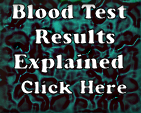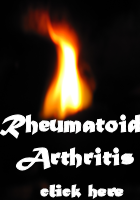| |
|
|
|
Seasonal Affective Disorder (SAD)

What is Seasonal Affective Disorder?
Over half a million people suffer every winter with a type of winter depression called Seasonal Affective Disorder or more commonly known as SAD. Between September and April, the worst months being January and February this mood disorder is associated with depression episodes and related to seasonal variations of light. It is due to the shortening of daylight hours and lack of sunlight in the winter time and is caused by a biochemical imbalance in the hypothalamus, part of the brain
There are a couple of theories which claim to be the possible cause of SAD:
Melatonin, a sleep-related hormone secreted by the pineal gland in the brain, has been linked to SAD due to the retina(eye) and pineal gland connections. This hormone, which may cause symptoms of depression, is produced at increased levels in the dark. Consequently when the days are shorter and darker the production of this hormone theoretically increases.
The other possibility is that SAD is related to a lack of serotonin (is believed to play an important role in the regulation of mood and sleep) and that exposure to full-spectrum artificial light may improve the condition by stimulating serotonin production, although this too has been disputed.
^ Back to Top
Symptoms:
- Sleep problems – disturbed sleep patterns, sometimes difficulty in staying awake
- Lethargy - Feeling tired and unable to carry out normal tasks
- Depression - Feelings of misery, apathy and loss of self-esteem
- Mood Changes - Mood swings, irritability and an inability to tolerate stress
^ Back to Top
Treatment:
Daily exposure to as much natural daylight as possible is of help. One study found that an hour’s walk in winter sunlight was as effective as two and a half hours under bright artificial light.
Light therapy has proven to be effective in up to 85 per cent of diagnosed cases, the treatment is to be in bright light every day ordinary light bulbs however, are not strong enough emitting only 200 - 500 lux ( Lux is the technical measurement of brightness) where the minimum dose is 2500 lux. Light therapy can be used daily in winter when the first symptoms begin to appear. You should sit about 2 to 4 feet away from the specially designed light boxes that can be purchased allowing the light to shine directly through the eyes.
Antidepressants have also been used to alleviate symptoms of SAD with some degree of success.
Counselling is a good therapy to support the sufferer and to help them accept the illness and gain insight into the limitations which SAD may put them under; as well as accessing coping strategies.
For further information contact:
SAD Association - www.sada.org.uk
Please Note: The information provided here should not be used for diagnosis or treatment of any medical condition. A medical practitioner should always be consulted for diagnosis and treatment of all medical conditions.
Click here to tell a friend/family member about this page
|
|





|











